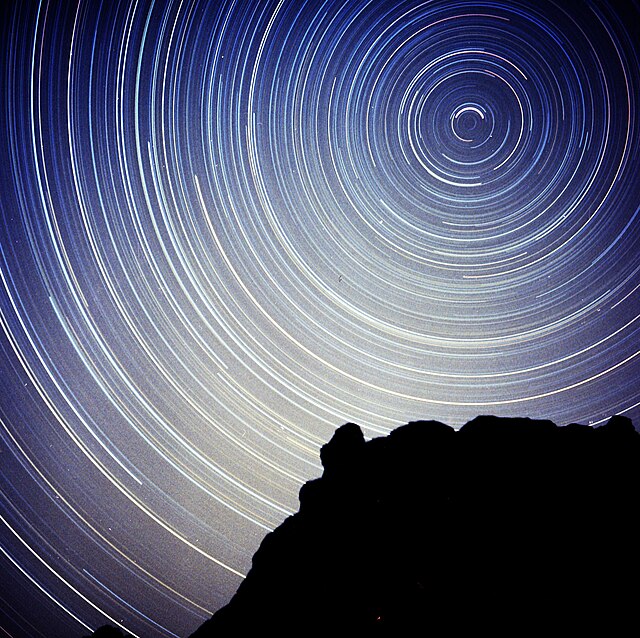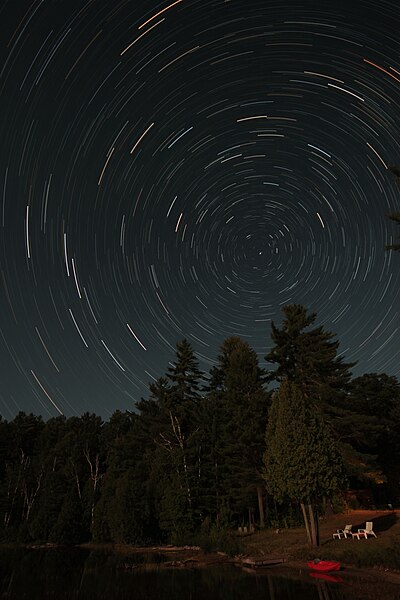A circumpolar star is a star that, as viewed from a given latitude on Earth, never sets below the horizon due to its apparent proximity to one of the celestial poles. Circumpolar stars are therefore visible from said location toward the nearest pole for the entire night on every night of the year. Others are called seasonal stars.
Circumpolar star trails in a long-exposure photo of several hours. The stars near the celestial pole leave shorter trails with the long exposure.
Circumpolar star trails captured with an extended exposure
The north and south celestial poles are the two points in the sky where Earth's axis of rotation, indefinitely extended, intersects the celestial sphere. The north and south celestial poles appear permanently directly overhead to observers at Earth's North Pole and South Pole, respectively. As Earth spins on its axis, the two celestial poles remain fixed in the sky, and all other celestial points appear to rotate around them, completing one circuit per day.
Over the course of an evening in the Northern Hemisphere, circumpolar stars appear to circle around the north celestial pole. Polaris (within 1° of the pole) is the nearly stationary bright star just to the right of center in this star trail photo.
The south celestial pole over the Very Large Telescope




